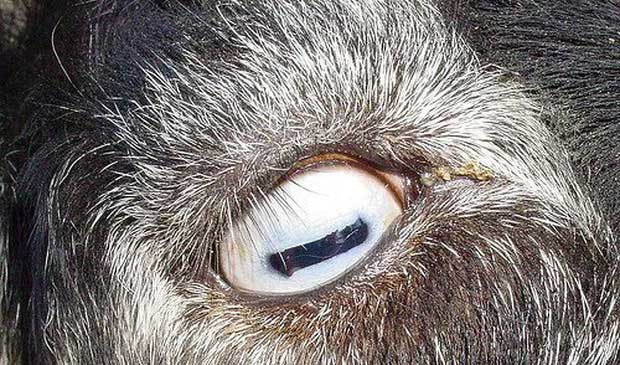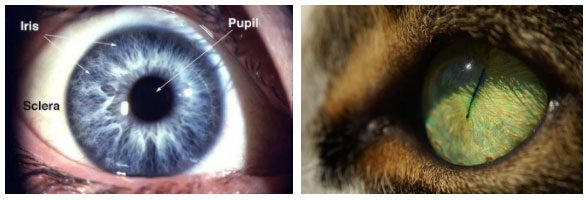Let’s get straight to the point, answer the question below: What animal is this eye from?

Can you guess what animal this eye belongs to?
- Dog
- Cow
- Pig
- Chicken
- Goat
- Eagle
- Ostrich
- Platypus
Strange Eyes
By now, you probably know the answer, right? In reality, for those who have never encountered a live goat in person, the appearance of their eyes – with horizontally rectangular pupils – can be quite surprising. And in fact, these eyes are more special than you might think.
In nature, only sheep and goats are two species of ungulates that possess such pupil shapes. Additionally, octopuses and cane toads also have them, but no other animals do.
But what does such an eye mean? Essentially, the eyes are where we receive information from the outside world and transmit it to the brain. The photons of light collected will be analyzed by the brain to create the images we see. Among these, the two most important parts of the eye are the pupil (the dark center) – which plays the role of receiving light, and the iris – which is responsible for controlling the pupil.
As the light-receiving part, it’s obvious that the amount of light collected depends on the size of the pupil. The larger the pupil, the more light can pass through. Therefore, if the light source is too strong, the pupil must constrict – just like a cat’s pupil narrows to a line when it is outside in bright sunlight.

However, each species will have a different pupil shape – due to the evolutionary process designed to best suit their survival.
Humans, primates, canids, and some other animals possess round pupils. This design is suitable for gathering a lot of light during the day, allowing individuals to have a very wide field of view. Meanwhile, cats and reptiles (snakes, crocodiles…) have vertical pupils because they primarily operate at night. When strong light is present, the iris will contract the pupil to protect their eyes.
Goats are different. As a species that is always classified as prey, goats must remain in a defensive state both day and night. They also do not require a vertical pupil, as their field of view is quite limited. Thus, nature has decided to give them narrow pupils that are horizontal – enough to help them perceive depth and angles well, even at night. The narrower the pupil, the poorer the image quality, but goats do not care much about that.





















































